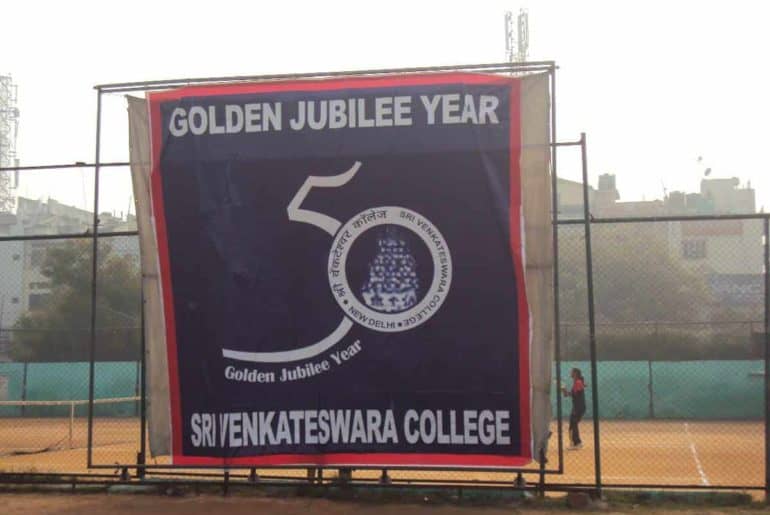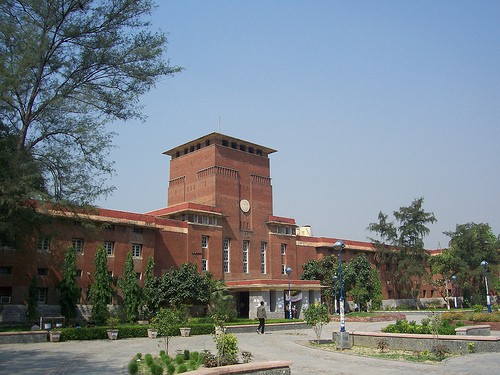For all those who missed out in August, AIESEC in Delhi University’s February recruitment has kicked off and if you’re someone whose unsure of what the organisation is all about, how you can apply and the kind of work that one is required to do, we provide you a rather candid insight into the functioning of the organisation.
 Present in over 110 countries and territories and with over 60,000 members, AIESEC is the world’s largest student-run organisation. AIESEC India currently has 24 local chapters namely Ahmedabad, Bangalore, Baroda, Bhubeneshwar, Chandigarh, Chennai, Deccan, Delhi IIT, Goa, Hyderabad, IIT KGP, Indore, Jaipur, Jalandhar, Kochi, Kolkatta, Lucknow, Manipal University, Mumbai, Navi Mumbai, Pune, Surat, Vidyanagar and Delhi University.
Present in over 110 countries and territories and with over 60,000 members, AIESEC is the world’s largest student-run organisation. AIESEC India currently has 24 local chapters namely Ahmedabad, Bangalore, Baroda, Bhubeneshwar, Chandigarh, Chennai, Deccan, Delhi IIT, Goa, Hyderabad, IIT KGP, Indore, Jaipur, Jalandhar, Kochi, Kolkatta, Lucknow, Manipal University, Mumbai, Navi Mumbai, Pune, Surat, Vidyanagar and Delhi University.
An AIESEC aspirant will have to go through a three round process which will include; a group discussion, team activity and personal interview. Group discussions have officially started today, the team activity will be a simulation of the work that AIESEC does, and the personal interviews will commence at a later stage. AIESEC Delhi University stands out in the national circuit for its innovative thought process and creativity, and so, thinking out of the box and having excellent communication skills will be essential to crack the personal interview.
 “We at AIESEC engage people from all over the world to achieve meaningful ends. Its all about the experience. If you say you’re with AIESEC, you can be: a) doing an internship in any country of any continent, except Antartica, b) providing international human resource to companies like TCS c) running your own social development project d) doing a lot of cool value adding stuff like sales, marketing, design, communication, public relations e) having fun in life“, says Adhiraj Singh, Local Committee President(E), AIESEC in Delhi University.
“We at AIESEC engage people from all over the world to achieve meaningful ends. Its all about the experience. If you say you’re with AIESEC, you can be: a) doing an internship in any country of any continent, except Antartica, b) providing international human resource to companies like TCS c) running your own social development project d) doing a lot of cool value adding stuff like sales, marketing, design, communication, public relations e) having fun in life“, says Adhiraj Singh, Local Committee President(E), AIESEC in Delhi University.
He further puts an AIESEC stereotype to rest and states, “The popular belief among DU students is that AIESEC is a party organisation. And I must say that they’re right. We do party. But they miss the complete story, we work and party and thats the cool part about us. We don’t get paid for what we do (don’t frown please, we do get reimbursed) but for us AIESEC moments are worth a life time. So if you’re someone who wants to connect, learn and contribute, or simply want an awesome C.V. Then are three words for you, AIESEC Delhi University”
 Still not convinced? Megha Dasgupta (Vice President, Talent Management, AIESEC DU) tells us why one should not miss out on this opportunity, “At 20, I managed the human resource of a 200 member Local Chapter, with knowledge of and experience with HR operations ranging from talent planning, induction, training and performance management. I have always been passionate about societal development and got an opportunity to lead a 10 member organizing committee that planned and delivered the social impact event “Udaan”, an initiative of AIESEC in Delhi University to bring out the artist in every child by providing underprivileged children in our city, the opportunity to exhibit their dormant talents by expressing them through cultural workshops and competitions and direct them towards quality educational opportunities, giving me holistic event management experience, with focus areas ranging from logistics, event funding, partnerships, working with NGOs and under privileged schools in Delhi and NCR”
Still not convinced? Megha Dasgupta (Vice President, Talent Management, AIESEC DU) tells us why one should not miss out on this opportunity, “At 20, I managed the human resource of a 200 member Local Chapter, with knowledge of and experience with HR operations ranging from talent planning, induction, training and performance management. I have always been passionate about societal development and got an opportunity to lead a 10 member organizing committee that planned and delivered the social impact event “Udaan”, an initiative of AIESEC in Delhi University to bring out the artist in every child by providing underprivileged children in our city, the opportunity to exhibit their dormant talents by expressing them through cultural workshops and competitions and direct them towards quality educational opportunities, giving me holistic event management experience, with focus areas ranging from logistics, event funding, partnerships, working with NGOs and under privileged schools in Delhi and NCR”
She further adds, “AIESEC life is surreal. The whole journey and experience is inexplicable. Its a revelation every single day; be it the people, the work or the environment”
If you’re the lucky one who gets to call him/herself an AIESECer, you will get to work in one of the following departments of AIESEC in Delhi University.
Corporate Relations
The corporate relations department of AIESEC DU is the best in AIESEC India. It provides international interns to corporate fulfilling their short term HR requirements. Some of the clients are TAJ, TCS, FORTIS.
Development Sector
This department works for the welfare of the society by undertaking various social projects and also by providing interns to the NGO’s. It runs various projects on wide spread issues like Casteism, Environment, Child and Women Empowerment. The local chapter through one of its projects is also sponsoring the education of 30 children in Seemapuri
Educational Sector
It runs various projects in premier institutes and schools across Delhi and NCR, focusing on soft skill development, cultural education and language training.
Outgoing Exchange Sector
This department works in sending Indian students on international exchange programmes. It offers management, technical and social internships to students.
External Relations
This department handles sponsorships and various external partnerships for AIESEC DU.
Communications and Information Management
This departments handles the external branding of AIESEC DU, working with various media houses. Some of the organizations they’ve worked with are MTV, Red FM, NDTV.
Talent Management
This department manages the HR of the organisation handling 200 odd people.
Finance
This department manages the administration and finances of the organization. Also works on preparing and maintaining the budgets hosted by the organization.
So if you’re from North Campus or a student of LSR, Gargi or DCAC, or if you study in Amity University or any other private institution and want to be a part of the world’s largest youth run organization, then register here https://docs.google.com/spreadsheet/viewform?formkey=dEVvU25WTFY4SFJKQW45ckp0dmZBRWc6MQ#gid=0AIESEC in Delhi University- Recruitment Registrations , 2012″











